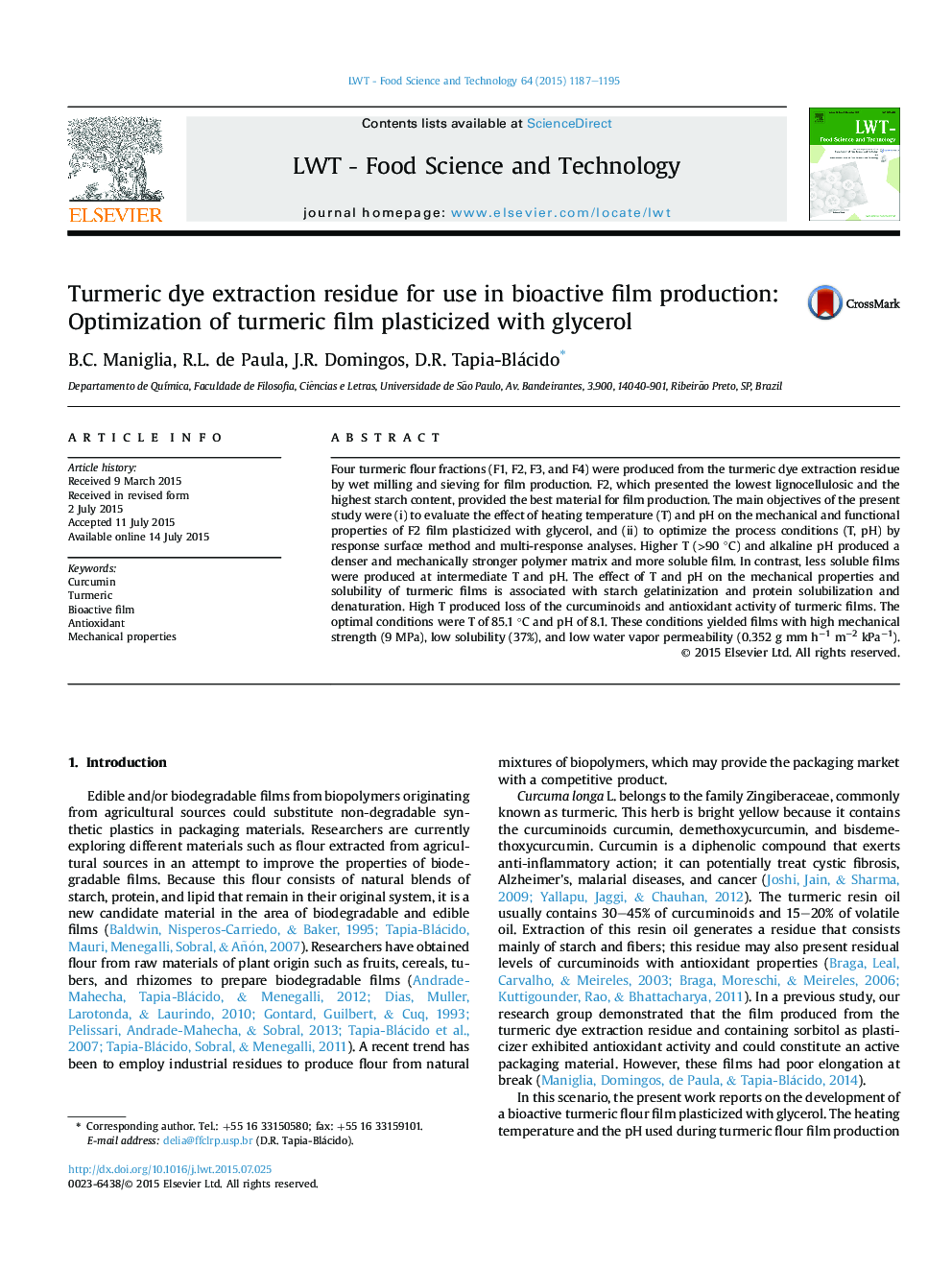| Article ID | Journal | Published Year | Pages | File Type |
|---|---|---|---|---|
| 6401951 | LWT - Food Science and Technology | 2015 | 9 Pages |
â¢Turmeric dye extraction by Soxhlet modified the starch granules.â¢Glycerol has little plasticizing effect on the turmeric flour film.â¢The heating temperature and pH affect the properties of turmeric flour film.â¢The optimal process conditions to obtain turmeric flour film have been established.â¢The films contain curcuminoids and display effective antioxidant activity.
Four turmeric flour fractions (F1, F2, F3, and F4) were produced from the turmeric dye extraction residue by wet milling and sieving for film production. F2, which presented the lowest lignocellulosic and the highest starch content, provided the best material for film production. The main objectives of the present study were (i) to evaluate the effect of heating temperature (T) and pH on the mechanical and functional properties of F2 film plasticized with glycerol, and (ii) to optimize the process conditions (T, pH) by response surface method and multi-response analyses. Higher T (>90 °C) and alkaline pH produced a denser and mechanically stronger polymer matrix and more soluble film. In contrast, less soluble films were produced at intermediate T and pH. The effect of T and pH on the mechanical properties and solubility of turmeric films is associated with starch gelatinization and protein solubilization and denaturation. High T produced loss of the curcuminoids and antioxidant activity of turmeric films. The optimal conditions were T of 85.1 °C and pH of 8.1. These conditions yielded films with high mechanical strength (9 MPa), low solubility (37%), and low water vapor permeability (0.352 g mm hâ1 mâ2 kPaâ1).
